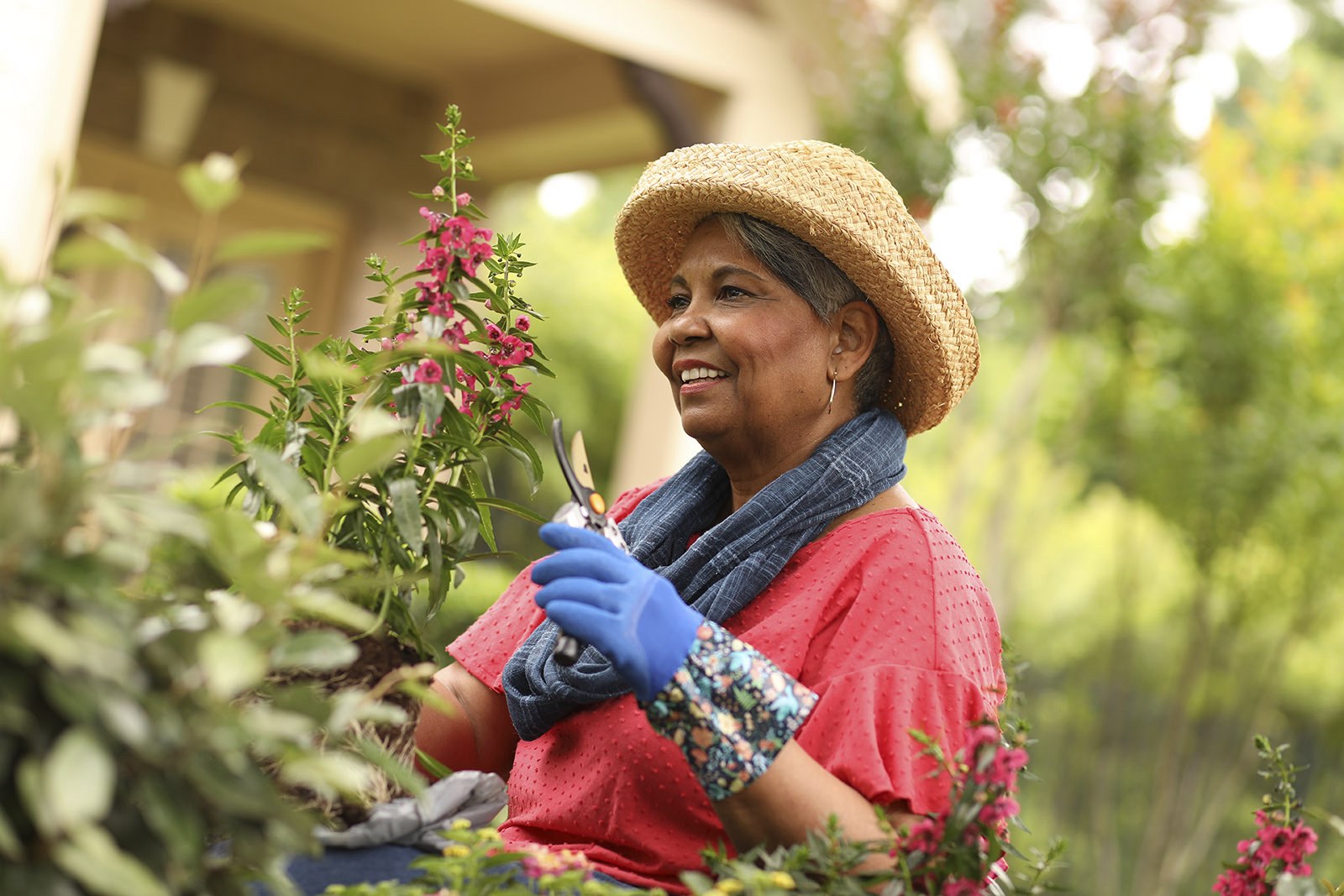Preparing for Spring Gardening Tips for Seniors
March 1, 2024
Puttering around a garden can be quite satisfying, but did you know it can also be highly therapeutic? With the spring gardening season approaching soon, it’s a great time to learn more about the benefits of gardening for the elderly and why gardening is good for your body, mind and spirit.
Spending time in the garden because it makes you happy is plenty of reason to pull out your gardening gloves and get to work. However, you’re also likely to discover many practical benefits, such as:
- Improved balance and muscle tone from all the bending and stretching
- More physical activity, both while you’re in the garden and getting to and from your garden site
- A boost of vitamin D, which your body needs for good bone health, better immunity, brain activity, and muscle function
- A sense of pride from successfully nurturing seeds into fully blooming life
- Less boredom as you fill your hours with a productive and fulfilling project
- The chance to meet others and make friends with peers who share your interest in gardening
- Less stress due to a drop in cortisol levels, a result of nature therapy for seniors that can occur when you spend as little as 20-30 minutes outdoors
Make the Most of Your Garden
Whether you’re new to gardening or continuing a lifelong passion, you can start planning how to take advantage of the physical and mental benefits of gardening for the elderly. Before you turn over the first spade of soil this spring, take some time to prepare by reviewing these tips:
Put safety first.
Although there are clear advantages for senior wellness through gardening, the hobby also poses some risks. You can limit those risks by taking precautions such as gardening with a buddy and carrying a phone you can use to call for help. Be sure to protect your skin and eyes from the sun’s damaging rays and carry a water bottle so you can stay well-hydrated. Pay attention to your body’s cues and pause to rest as often as you need, making sure you save enough energy to return safely indoors.
Plan what to plant.
When and how you begin your gardening journey hinges heavily on where you live. For example, in northern Illinois, you can start some seeds indoors as early as mid-February, but you’ll need to wait until after the last frost in late April to plant or transplant the seedlings. When you’re deciding what to grow this year, take into account how much space you’ll have available and what grows well in your climate. For help, turn to resources like your local library, gardening clubs, and the internet. You might even find it useful to plan your garden with a neighbor so you can share a more diverse harvest.
Using What You Grow
You’ll have many options for sharing the results of your labor. For example, you can explore nutritious new recipes featuring your freshly grown produce. You might be able to sell your crops at a local farmer’s market or share them with local clubs and organizations, such as nonprofits that accept fresh produce donations.
If you’ve planted flowers, you may leave them as they are so others can enjoy their beauty, or you might invite your neighbors to cut stems for fresh bouquets. You could even host a social gathering and invite a local florist to teach your guests how to create a stunning arrangement.
Gardening in Senior Living
Recognizing the many benefits of gardening for the elderly, many senior living communities have introduced gardens for residents to enjoy — and in some cases, even tend to themselves. Such is the case at Riverside Senior Life, where 12 raised beds are dedicated to residents who plant a robust array of flowers, fruits, and vegetables.
Residents can request a quarter, third, half, or full bed to tend, and a gardening committee helps oversee all senior gardening activities, including evaluating resident interest and the need to add more beds each spring.
“Some of the current residents had successful careers in farming and botany, so the harvest tends to be quite bountiful,” said Benjamin March, Executive Director for the community. “The cornucopia of fruits and vegetables is shared by residents who would like to eat it.”
At the end of the growing season, local youth scout troops clean out the beds. During the off-season, the maintenance team makes necessary repairs so the beds are ready when spring rolls around once more.